October 2, 2023
Using OpenAI’s Dall-E 3 for Image Creation

OpenAI has recently unveiled Dall-E 3, a cutting-edge text-to-image model that surpasses its predecessor, Dall-E 2, in terms of accuracy.
This advanced model can comprehend intricate nuances and details, enabling users to effortlessly generate images from their imagination.
While Dall-E 3 is currently in a research preview phase and will be accessible to ChatGPT Plus and Enterprise clients through the API later this year, there’s an exciting way to use it right now: Microsoft’s Bing Image Creator.
Bing Image Creator is a unique tool that crafts images based on user descriptions.
By simply inputting a description, additional context like location or activity, and a preferred art style, users can have Bing Image Creator produce the image for them.
What’s even more thrilling is that this tool is now powered by Dall-E 3, ensuring high-quality and realistic image outputs, especially in intricate details.
However, users should be aware of certain limitations when using Bing Image Creator.
OpenAI has excluded explicit sexual and violent content from Dall-E 3’s training dataset.
This means the tool won’t generate images that are explicit or violent in nature.
Additionally, Dall-E 3 has been designed to reject requests that specify a public figure by name or seek an image styled after a living artist.
To ensure authenticity and traceability, all images generated by Bing Image Creator come with an invisible digital watermark in accordance with the C2PA specification.
This watermark records the time and date of creation, verifying that the image was produced by AI.
Revolutionizing Content Creation with Advanced AI Tools

In the rapidly evolving digital landscape, content creators and small business owners are constantly on the lookout for tools that can streamline their workflow and enhance the quality of their content.
With the advent of artificial intelligence (AI), a plethora of AI-powered tools have emerged, offering solutions that were once deemed impossible.
One such platform that has garnered attention is Media.io. This platform is a one-stop-shop for a myriad of AI tools tailored for photo and video editing.
Here’s a deep dive into some of the standout features that Media.io offers:
1. AI Image Upscaler and Enhancer:
In the realm of blogging, especially for platforms like Pinterest, image dimensions play a pivotal role.
Previously, the recommended image size for Pinterest was 600 by 900 pixels.
However, with changing requirements, the platform now suggests images to be at least 1000 by 1500 pixels.
This posed a challenge for many who had older images saved in the smaller size without a larger copy. Enter Media.io’s AI Image Upscaler and Enhancer.
This tool can upscale images to a larger resolution while also enhancing the original photo’s sharpness. The result?
Old photos not only fit the new size requirements but also look sharper and more refined.
2. Image Compressor:
Website speed is crucial for user experience and search engine rankings.
Heavy images can significantly slow down a website, affecting its performance in search results.
Media.io’s Image Compressor tool addresses this issue by reducing the size of images without compromising on quality.
For instance, an image that originally weighed 2.7 MB can be compressed down to a mere 161 KB, making it optimal for website uploads.
3. AI Text and Object Remover:
Content creators often come across images or videos with unwanted text or objects.
Manually editing these elements can be time-consuming and may not yield the best results.
Media.io offers a tool that can seamlessly remove text and objects from both photos and videos.
This feature is particularly handy for those who want a clean slate to work with, free from any distractions.
In conclusion, the digital age demands tools that can keep up with the ever-changing requirements of content creation.
Platforms like Media.io, with their suite of AI-powered tools, are paving the way for a more efficient and high-quality content creation process.
Whether you’re a blogger, a marketer, or a small business owner, leveraging these tools can significantly elevate your content game.
Transforming Blog Content into Social Media Gold with Coverposts
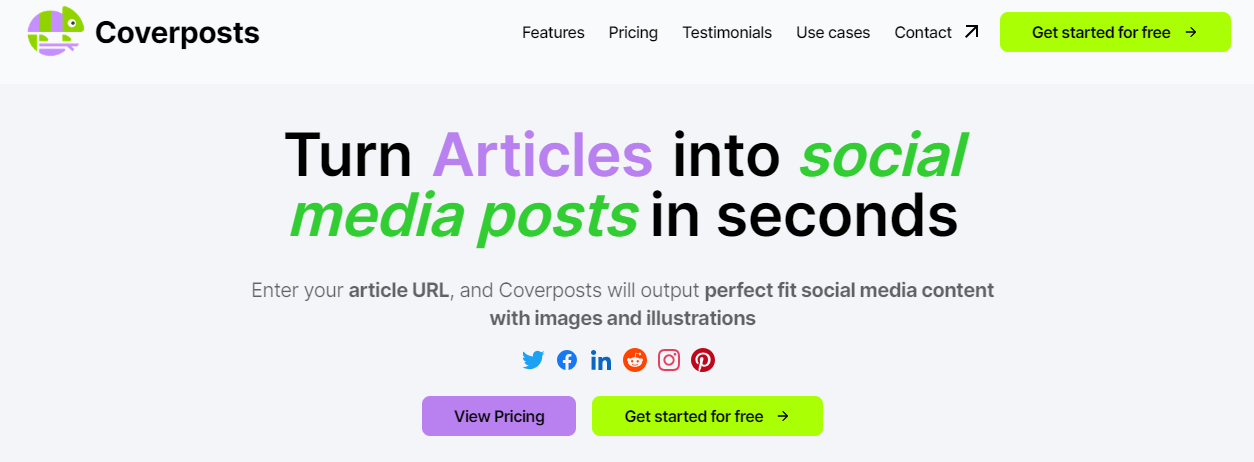
In the rapidly evolving digital landscape, the demand for captivating social media content has never been higher.
Businesses, content creators, marketing agencies, and various other entities are constantly in search of tools that can elevate their online presence.
This is where Coverposts, an innovative AI-powered tool, comes into play.
Coverposts is designed to seamlessly transform blogs, articles, books, and other written documents into engaging social media posts.
The process is straightforward: users paste their article’s URL into the platform, customize a caption that aligns with their brand’s voice, and let Coverposts handle the rest.
What sets this tool apart is its ability to not only generate text-based content but also craft complementary images and illustrations, enhancing the overall visual appeal of the posts.
One of the standout features of Coverposts is its direct sharing capability.
Once a post is curated to perfection, users can effortlessly share it on major social platforms, including Twitter, Facebook, LinkedIn, and Reddit, right from the Coverposts interface.
This streamlined approach eliminates the need for multiple tools and platforms, making the content creation process more efficient.
In essence, Coverposts is revolutionizing the way entities approach social media content creation.
Its blend of AI-driven capabilities and user-centric features positions it as an indispensable asset for anyone keen on amplifying their digital footprint.
Thumbmachine: Revolutionizing YouTube Thumbnail Creation
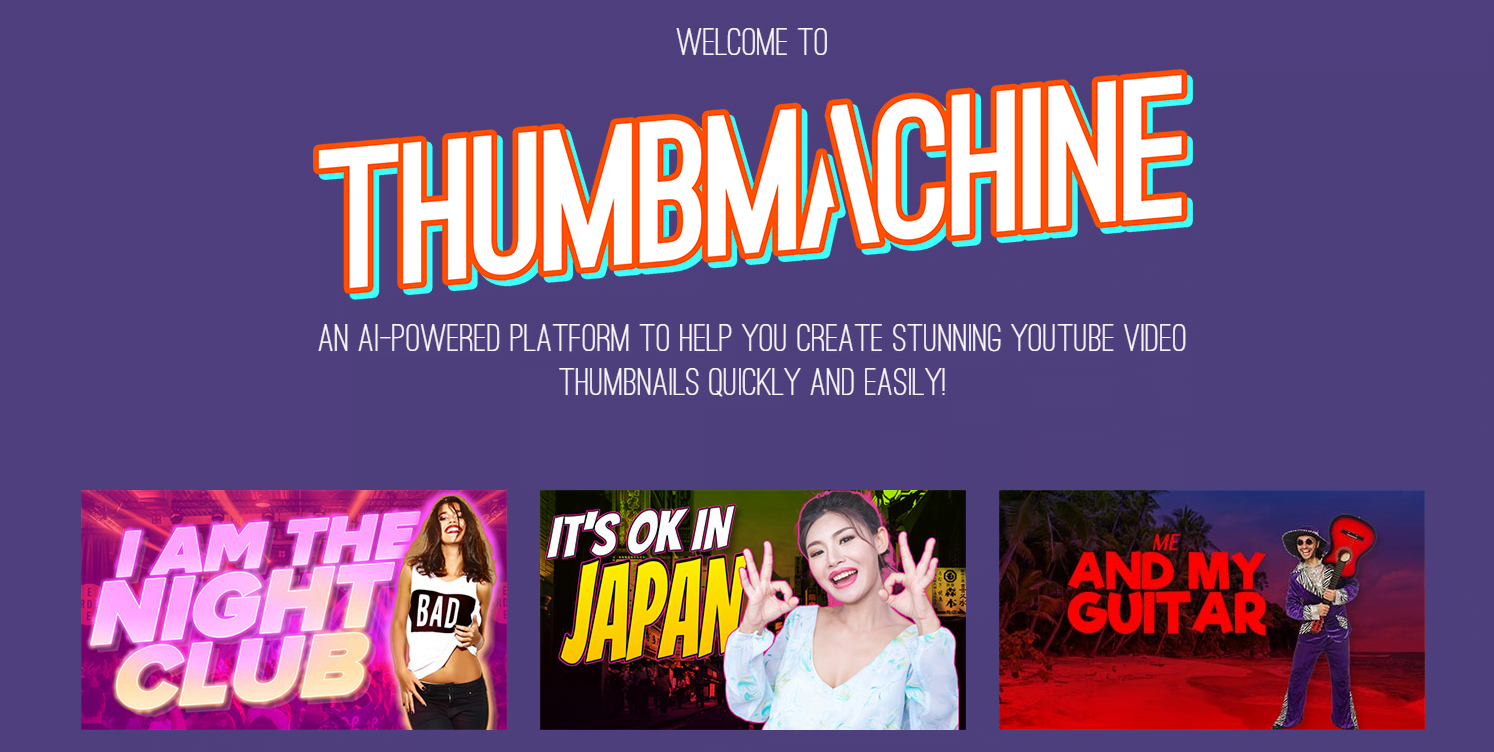
In the age of digital content, where YouTube reigns supreme, the importance of an eye-catching thumbnail cannot be overstated.
It’s often the first thing viewers notice, and it can significantly influence whether they decide to click on a video.
Recognizing this challenge, Thumbmachine emerged as an AI-powered solution designed to simplify and enhance the thumbnail creation process.
Thumbmachine offers a straightforward approach to thumbnail design.
Users can either create a hero image with Thumbmachine’s AI or let the AI thumbnail maker pick a hero from their favorite photos.
They then have the option to upload their own background, select from Thumbmachine’s vast collection, or even choose a gradient.
While Thumbmachine suggests optimal colors, users have the freedom to customize them as they see fit.
After adding the desired title or any text they wish to display on the thumbnail, Thumbmachine takes over, leveraging its AI capabilities to produce a captivating thumbnail.
What truly sets Thumbmachine apart is its extensive feature set. With access to over 3 million free photos, users have a plethora of choices at their fingertips.
The platform also boasts an AI background remover and an image upscaler, ensuring that thumbnails are of the highest quality.
Additionally, the platform allows users to create multiple thumbnail versions, facilitating A/B tests to achieve higher click-through rates (CTR).
Thumbmachine’s AI-assisted design tools automate repetitive tasks, allowing creators to focus on the creative aspects of their work.
This results in the rapid generation of multiple design options based on user input, such as color schemes, typography, and layout.
Gleaning additional insights from Thumbmachine’s website, it’s evident that the platform is built on cutting-edge technology.
Thumbmachine uses a customized version of a Stability text-to-image generative AI model to create primary images.
It operates entirely on their servers, meaning users don’t need to download or install anything.
While designed primarily for desktop computers and tablets, Thumbmachine is versatile and can be used on any device.
Importantly, users retain all rights to the artwork created with Thumbmachine, even if they utilize photos from the platform’s repository.
In conclusion, Thumbmachine is a game-changer in the world of digital content creation.
By harnessing the power of AI and providing a comprehensive suite of features, it ensures that YouTube creators have the best resources at their fingertips to make their content stand out.
October 9, 2023
GPT-4 Vision: A Revolutionary Leap in AI Capabilities

GPT-4 Vision, the new feature of ChatGPT Plus, has introduced groundbreaking advancements that are set to transform industries and shape the future.
Here’s a deep dive into its capabilities:
Multimodal Interaction: GPT-4 Vision allows for a seamless interaction between text and images. For instance, you can take a photo, ask the AI to describe it, and then edit it conversationally. The AI can describe the image in detail and even generate new images based on the description.
Design to Code: GPT-4 Vision can autonomously convert a design image into code. For example, an image of a webpage design can be transformed into functional code, replicating the design in a live environment.
Educational Assistance: The AI can break down complex diagrams, such as a human cell, and explain them in simple terms suitable for students. This capability can revolutionize education, offering students a personalized tutor.
Image to Live Website: The AI can transform a low-resolution image of a website into live, functional code, replicating the design almost instantly.
Image Recognition: GPT-4 Vision can recognize scenes from movies, complex flowcharts, and even intricate automation processes. It can describe dishes, estimate their calorie content, and provide recipes.
Location Identification: The AI can recognize specific locations from images. For instance, it can identify views from specific points, such as Makapu Point on the island of Oahu in Hawaii.
SaaS Development: GPT-4 Vision can assist in the development of Software as a Service (SaaS) applications. Given an image of a SaaS design, it can generate the corresponding code, bringing the design to life.
Understanding Abstract Concepts: The AI can interpret abstract images and provide insights into their meaning, emphasizing the importance of communication and alignment in group settings.
Whiteboard to Website: Drawings or designs on a whiteboard can be transformed into functional websites, showcasing the AI’s ability to understand and replicate designs.
Electronics Understanding: GPT-4 Vision can understand electronic schematics, such as those of Arduino, and provide detailed breakdowns of the components.
Interior Design Assistance: The AI can provide suggestions for interior design based on images of rooms, introducing accent colors, lighting, and decor items to enhance the ambiance.
Reading Handwriting: Even if you have bad handwriting, GPT-4 Vision can decipher and transcribe it, bridging the gap between handwritten and digital content.
Finding Waldo: In a fun twist, the AI can also locate Waldo in the classic “Where’s Waldo?” images.
The capabilities of GPT-4 Vision, combined with its ability to interact with text, images, and even audio, make it a formidable tool in the AI arsenal.
As the technology continues to evolve, the possibilities seem endless, and the world eagerly awaits its next iteration.
Inksprout Video: Revolutionizing Content Repurposing with AI
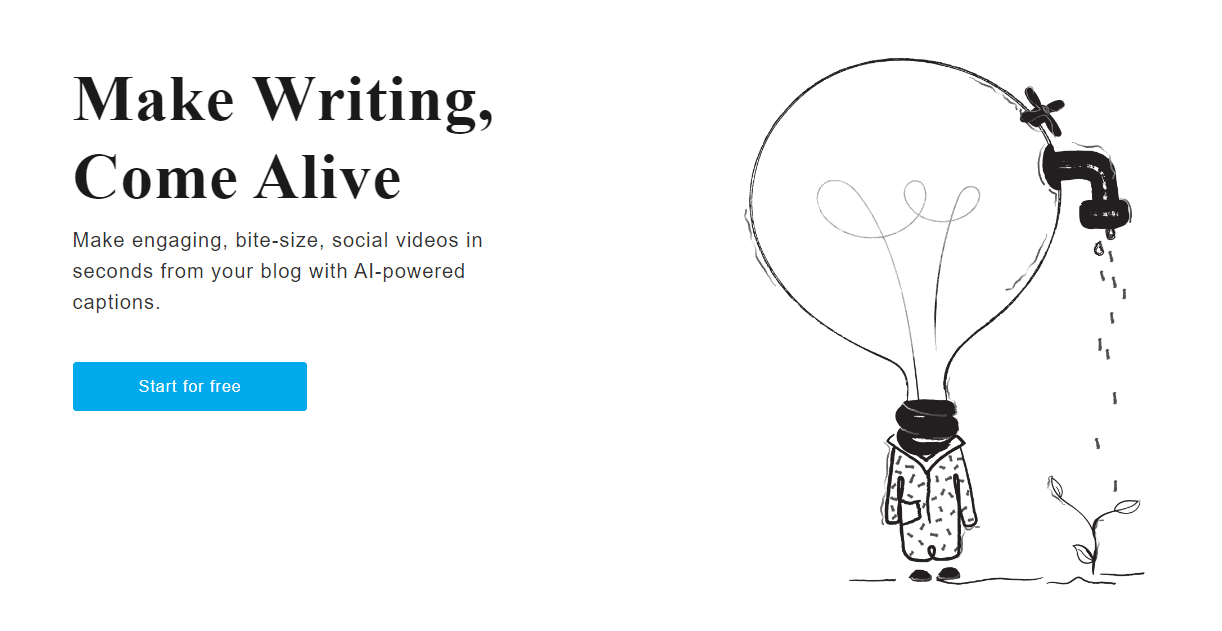
In the ever-evolving digital landscape, content remains king.
However, the way we consume content has seen a significant shift, with videos becoming a dominant force on social media platforms.
Recognizing this trend, Inksprout has introduced an AI-based tool that seamlessly transforms blog content into engaging social videos, aptly named “Inksprout Video.”
Inksprout Video is not just another tool in the market; it’s a game-changer.
By harnessing the power of advanced AI algorithms, it takes the essence of your blog content and repurposes it into bite-sized, compelling videos perfect for social media consumption.
The process is incredibly streamlined: users simply provide the URL of their blog post, and Inksprout handles the rest.
From generating a concise summary of the article using its AI-powered summarization to crafting engaging videos based on this summarized content, the tool ensures that the core message of the blog remains intact while making it more digestible for a video-centric audience.
But the innovation doesn’t stop there. Inksprout is committed to staying at the forefront of technology and user needs.
The tool is continuously undergoing development and improvements.
By signing up for updates, users can stay informed about the latest features, ensuring they always have the best tools at their disposal.
The applications of Inksprout Video are vast.
Whether you’re looking to promote your latest blog post, enhance your social media marketing strategy, or simply streamline your content repurposing process, Inksprout Video has got you covered.
It offers content creators and marketers an innovative approach to reach a broader audience without the need to create new content from scratch.
In conclusion, Inksprout Video is redefining content repurposing.
Its unique blend of AI-driven summarization and video generation capabilities makes it an indispensable tool in today’s content marketing toolkit.
With Inksprout Video, creating high-quality social videos from existing blog posts has never been easier or more efficient.
Secret Method to Boost Affiliate Marketing and Grow Your Email List Using Pinterest

Are you looking to skyrocket your affiliate income and grow your email list using Pinterest?
Here’s a simple method that can help you achieve this in just about 10 minutes a day. Most of the processes are automated, making it easy for anyone to implement.
Step 1: Create a Pinterest Business Account
Start by creating a Pinterest account. Once done, navigate to account settings, click on account management, and convert your account to a business account.
This is essential as a business account offers more features suitable for marketing.
Step 2: Choose an Affiliate Product
Before building an email list, identify a good product to promote. Platforms like ClickBank offer a plethora of products.
Focus on popular categories like health, making money, and relationships. Choose a product with a good gravity score, indicating its popularity.
Step 3: Create a Landing Page to Collect Emails
Instead of sending potential customers directly to the product page, first collect their email addresses.
This allows for follow-ups, increasing the chances of conversions. Use tools like Moosend to create a landing page.
Ensure the page is simple, with a primary focus on collecting email addresses.
Step 4: Drive Traffic to Your Landing Page Using Pinterest
Pinterest is a fantastic platform to drive free traffic. Use Canva to create attractive pins tailored for your target audience.
Remember, the primary audience on Pinterest is women, so design your pins accordingly.
Ensure the pin title and description are catchy and contain relevant keywords. In the destination field, input the URL of your landing page.
Step 5: Build and Nurture Your Pinterest Account
To create a stable income stream, continuously build your Pinterest account. Regularly pin relevant content and engage with other users.
While you can occasionally pin direct affiliate links, it’s more efficient to direct traffic to your landing page, especially for high-ticket products.
Conclusion
Building an email list for affiliate marketing is a sustainable business strategy.
Even if someone doesn’t buy a particular product, having their email address means you can promote other related products in the future.
This method is versatile and can be used for products in any niche.
With consistency and the right approach, you can significantly boost your affiliate income using Pinterest.
How AI-Generated Images Can Earn You Significant Income
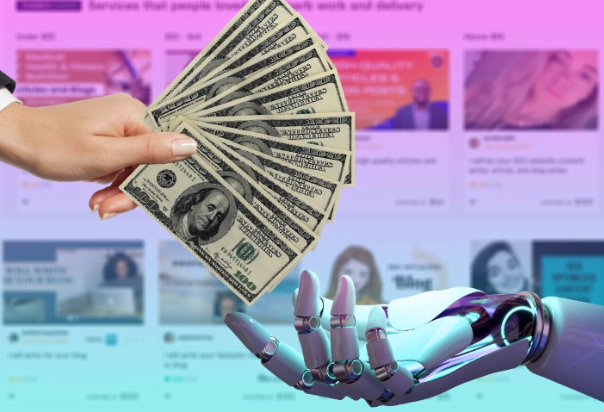
In the age of digital transformation, Artificial Intelligence (AI) is revolutionizing various industries, including the world of design.
One of the most intriguing developments in this space is the ability of AI to generate images, and not just any images, but those that can potentially earn you hundreds to thousands of dollars.
AI-Generated Images with Text
The realm of AI image generators has seen significant advancements with tools like Ideogram AI and DALL-E 3.
While most AI image generators have struggled with incorporating text into their designs, these tools have emerged as frontrunners in this aspect.
Unlike other tools that might jumble up the text, Ideogram AI and DALL-E 3 can seamlessly integrate text into the generated images.
This capability opens up a plethora of opportunities, especially in the realm of logo design.
With just a few inputs, such as a word or phrase, these AI tools can produce multiple logo design options.
These designs can range from conceptual logos to simple font-based logos.
Monetizing AI-Generated Designs
One of the platforms where designers can showcase and sell their designs is 99 Designs.
Often referred to as the “rich man’s Fiverr,” 99 Designs is a platform where designers can charge premium prices for their work.
For instance, logo designs can fetch prices ranging from $299 to as high as $1,599.
The beauty of using AI tools like Ideogram AI and DALL-E 3 is that they level the playing field.
Traditional designers might spend hours or even days crafting a logo, but with AI, similar or even superior designs can be produced in mere minutes.
This efficiency, combined with the high prices on platforms like 99 Designs, means that there’s potential for significant earnings.
Beyond Logos
While logos are a prominent category, the potential of AI-generated designs doesn’t stop there.
Other categories include web app design, clothing merchandise, art and illustration, cards or invitations, characters, tattoos, 3D illustrations, and more.
Each of these categories presents an opportunity to monetize AI-generated designs.
For instance, the tattoo industry is ripe for disruption with AI-generated designs.
Similarly, the e-commerce sector can benefit from unique AI-generated designs for merchandise like t-shirts.
Conclusion
The rise of AI tools like Ideogram AI and DALL-E 3 is a testament to the rapid advancements in the field of artificial intelligence.
These tools act as a supercomputer, a high-level professional designer, or even a genie in a bottle, ready to fulfill design wishes on command.
The disruption caused by AI in the design world means that traditional platforms like 99 Designs, Fiverr, and Etsy are undergoing a transformation.
Those equipped with the power of AI have an edge, as they possess a “super brain” or a “super designer” by their side.
In essence, AI is doing the heavy lifting, allowing individuals to harness its power and explore new avenues for income.
The fusion of creativity and technology is opening doors to opportunities that were once thought to be the domain of professional designers alone.
October 16, 2023
Adobe Firefly 2 vs. Midjourney vs. DALL-E 3: A Comparative Analysis

Adobe has recently unveiled its new image generation model, Firefly 2, which has garnered significant attention in the AI community.
This article delves into the features and capabilities of Firefly 2 and compares it with other prominent models, namely Midjourney and DALL-E 3.
Adobe Firefly 2:
Introduction: Adobe’s Firefly 2 was announced at the Adobe Max event, a major creative gathering hosted by the company.
Features: The Firefly 2 model boasts of producing significantly enhanced images in comparison to its predecessor.
The colors are more vibrant, the resolution is higher, and the model excels in capturing texture and other intricate details.
AI-Powered Editing: Firefly 2 is not just about generating images. It also offers AI-driven editing capabilities.
For instance, users can adjust the depth of field in photos after they’ve been generated.
Additionally, Adobe has introduced a feature that lets users match the output of their prompts to a list of images provided by Adobe or by uploading a reference image.
Vector Images: Adobe has integrated a variation of the model specifically for vector images into Illustrator.
Users can describe the vector graphic they desire, like “an astronaut dog in a space suit,” and then utilize Illustrator’s editing controls.
Comparison with Midjourney and DALL-E 3:
Photo Realism: Firefly 2 excels in generating photorealistic images, especially of humans.
In terms of landscape photos, Midjourney takes the lead, followed by Firefly, with DALL-E 3 trailing behind.
However, when it comes to close-ups and photorealism centered around humans, Adobe’s Firefly 2 truly stands out.
Text Generation: DALL-E 3 remains superior in text generation, leaving both Midjourney and Adobe behind.
While Midjourney often produces nonsensical characters, Adobe manages to capture some semblance of the intended text.
Content Authenticity: Adobe has introduced the content credentials icon as part of their content authenticity initiative.
This icon serves as a digital watermark, detailing how an image was created, the software used, and the time of creation.
This feature emphasizes the importance of transparency and authenticity in the age of AI-generated content.
In conclusion, the advancements in AI image generation models, as showcased by Adobe’s Firefly 2, Midjourney, and DALL-E 3, highlight the rapid progress in the field.
Each model has its strengths and areas of specialization, offering users a range of options to suit their specific needs.
As AI continues to evolve, it will be fascinating to see how these models further develop and the new capabilities they bring to the table.
WriteHuman: The Ultimate AI Detection Remover for Authentic Human Writing
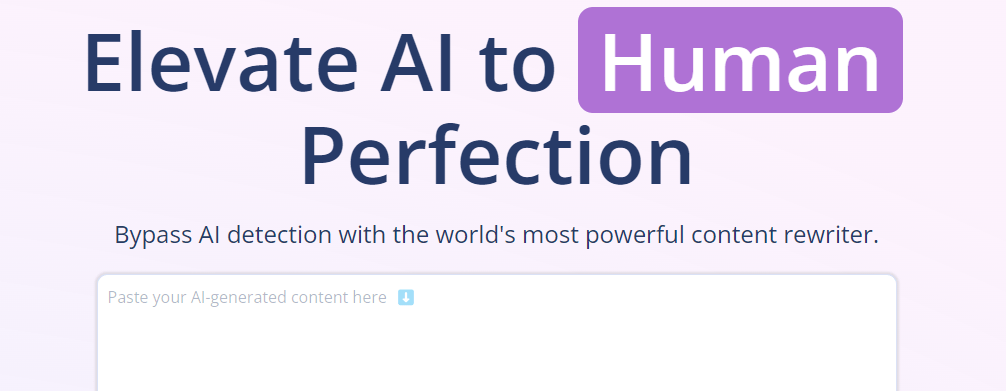
In the rapidly evolving world of AI-generated content, there’s a growing need for tools that can ensure the authenticity and privacy of the content we produce.
Enter WriteHuman, a revolutionary tool designed to transform AI-generated text into undetectable human writing.
This game-changer promises to redefine the way we perceive and use AI-generated content.
WriteHuman stands out as a beacon for those who wish to maintain the human touch in their content while leveraging the power of AI.
It offers a unique solution to bypass AI detection, ensuring that texts generated from AI platforms like ChatGPT, Bard, and others are indistinguishable from human writing.
This is particularly crucial in an era where platforms like Turnitin, ZeroGPT, and Writer are becoming increasingly adept at detecting AI-generated content.
The process is incredibly user-friendly.
Users can simply paste their AI-generated text into WriteHuman.ai, and if there are specific words or phrases they wish to protect, they can enclose them in [brackets].
With just a click, the tool works its magic, ensuring the content bypasses AI detection seamlessly.
Harnessing the Power of ChatGPT for Online Businesses
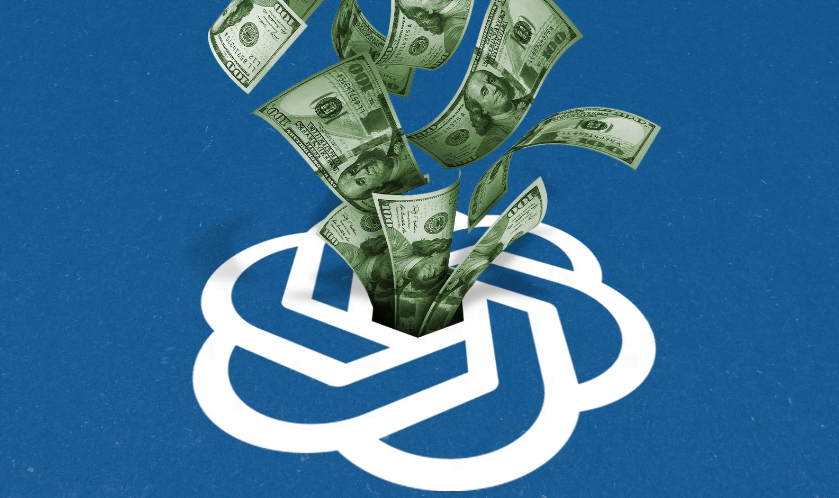
ChatGPT has become a game-changer for many online entrepreneurs, enabling them to streamline their operations and maximize their profits.
Here’s a deep dive into how you can leverage ChatGPT to make significant earnings online.
1. Creating and Selling eBooks:
The digital book market is booming, and with ChatGPT, creating content has never been easier.
For instance, if you’re interested in crafting a keto recipe book, ChatGPT can generate a list of recipes complete with ingredients and step-by-step instructions.
Platforms like Canva can then be used to design the eBook, which can subsequently be sold on platforms like Amazon Kindle Direct Publishing.
Stories abound of individuals making six-figure incomes by selling simple eBooks, and with ChatGPT, the process is even more streamlined.
2. Faceless YouTube Channels:
The concept of faceless YouTube channels, where content is produced without the creator appearing on camera, has gained traction.
ChatGPT can be employed to script videos, generate voiceovers, and even suggest catchy video titles and descriptions.
By combining ChatGPT’s capabilities with stock video clips and AI voiceovers, one can create engaging content that attracts millions of views.
Some faceless channels are even earning up to $8,000 per month through ad revenue.
3. Blogging with Affiliate Marketing:
Blogs remain a powerful tool for online income, especially when combined with affiliate marketing.
ChatGPT can assist in generating content for blogs, which can then be monetized through affiliate links.
For instance, a post about the top five cameras for beginners can include affiliate links to those cameras on Amazon.
Every purchase made through these links earns the blogger a commission. With the right strategy, this can translate to substantial monthly earnings.
4. Email Marketing Agency:
Email marketing is a tried and tested method for businesses to engage with their customers. However, crafting compelling emails can be challenging.
This is where ChatGPT comes in.
By offering email marketing services powered by ChatGPT, one can provide businesses with engaging emails that resonate with their audience.
Platforms like Fiverr and Upwork have freelancers charging between $100 to $500 per email.
Given that businesses often send multiple emails weekly, the potential earnings are significant.
With ChatGPT, crafting these emails becomes a breeze, allowing for scalability and increased clientele.
In conclusion, ChatGPT offers a plethora of opportunities for online entrepreneurs.
Whether it’s crafting eBooks, scripting YouTube videos, generating blog content, or offering email marketing services, the potential for substantial earnings is vast.
By harnessing the power of ChatGPT, one can streamline their operations, offer value to their audience, and maximize their online income.
As AI continues to evolve, it’s clear that tools like ChatGPT will play a pivotal role in shaping the future of online businesses.
The Power of Newsletters in the Age of AI

Newsletters have long been a powerful tool for businesses and individuals to communicate with their audience.
But with the advent of artificial intelligence, the potential of newsletters has been amplified to new heights.
Here’s a deep dive into how AI can revolutionize the newsletter business and lead to substantial profits.
The Essence of Newsletters:
At its core, a newsletter is about sending people emails.
While the term “email” might sound mundane, the concept of a “newsletter” carries a connotation of something bigger and better.
It’s not just about sending information; it’s about delivering value.
The AI Advantage:
The challenge with newsletters has always been content creation. How do you consistently deliver fresh, relevant, and engaging content to your subscribers? Enter AI.
With tools like Google Bard, you can now get the latest news on any topic of your choice.
Whether it’s marketing, finance, or even niche topics like turtles or soccer, AI can fetch the most current content for you.
Content Creation Made Easy:
Imagine wanting to create a newsletter about the latest in marketing. With AI, you can simply ask for the latest news about marketing, and within seconds, you have a list of the most recent developments.
You can then ask the AI to write a summary article on a chosen topic, and voila, your newsletter content is ready.
This process can be repeated for multiple topics, ensuring a rich and diverse newsletter.
The Financial Potential:
The financial potential of newsletters is staggering. For instance, the Morning Brew newsletter sold their business for a whopping $75 million after just six years.
And this is just one example. With AI handling the content creation, the overhead costs are minimal, leading to high-profit margins.
Monetization Strategies:
Beyond subscription fees, newsletters offer multiple avenues for monetization.
You can run ads, promote sponsored content, sell merchandise, or even offer premium content for a fee.
The key is to deliver value consistently, ensuring subscriber loyalty.
Building an Asset:
A well-established newsletter isn’t just a source of recurring revenue; it’s an asset.
If you build a newsletter with a generic brand (not tied to an individual’s name), it becomes a sellable asset.
Depending on its annual revenue, a newsletter can be sold for multiples of its earnings, leading to a substantial payday for the owner.
The Future is Bright:
With AI tools becoming more sophisticated and accessible, the future of newsletters looks promising.
Whether you’re an individual with a passion for a particular topic or a business looking to engage with your audience, newsletters powered by AI offer an unparalleled opportunity.
In conclusion, the fusion of AI with the newsletter business model presents a golden opportunity for entrepreneurs and content creators.
It’s a chance to deliver value, engage with a dedicated audience, and reap substantial financial rewards.
October 23, 2023
Anthropic Introduces Claude 2 AI to a Global Audience
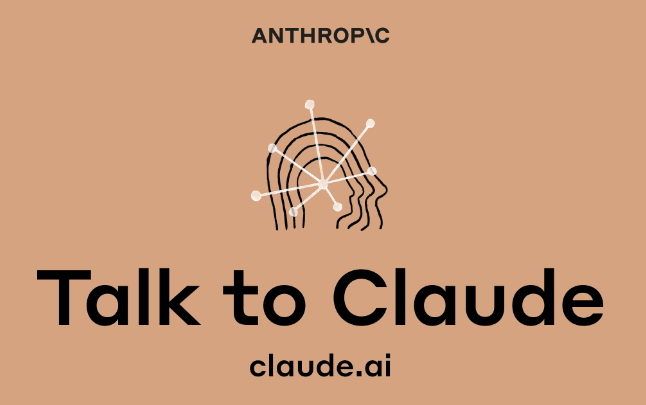
Anthropic, a notable name in the AI industry, has expanded the availability of its AI chatbot, Claude, to a staggering 95 countries.
Previously, Claude was limited to a select few nations, but the recent expansion has made it accessible to a much broader audience.
A standout feature of Claude 2, distinguishing it from competitors like ChatGPT, is its file upload capability.
Users can upload documents, such as PDF reports, to obtain summaries or ask specific questions about the content.
This feature is especially beneficial for tasks like seeking advice on CVs.
While platforms like Quora’s Poe allow file uploads to ChatGPT, they often truncate longer documents. In contrast, Claude 2 can handle a massive 100,000 tokens, ensuring comprehensive content processing.
However, Claude 2’s availability has some exceptions.
Despite its widespread rollout, it remains unavailable in the European Union (EU) due to the region’s stringent privacy regulations.
Notably, countries like Australia, New Zealand, the UK, and the US have access, but Canada is conspicuously absent.
A detailed list of supported countries can be found on Anthropic’s official website.
Claude 2 made its debut in July, initially available to users in the US and the UK.
Anthropic highlighted that this model outperformed its predecessor, Claude 1.3, especially in coding and math tasks.
One of Claude’s defining features is its ability to process large files.
While this capability sets it apart for now, it’s anticipated that other AI models will soon catch up. Another primary objective for Claude is to deliver ‘harmless’ responses, aligning with the broader AI industry’s goal of ensuring their products remain beneficial and non-threatening.
ChatGPT Now Features Image Generation with DALL·E 3
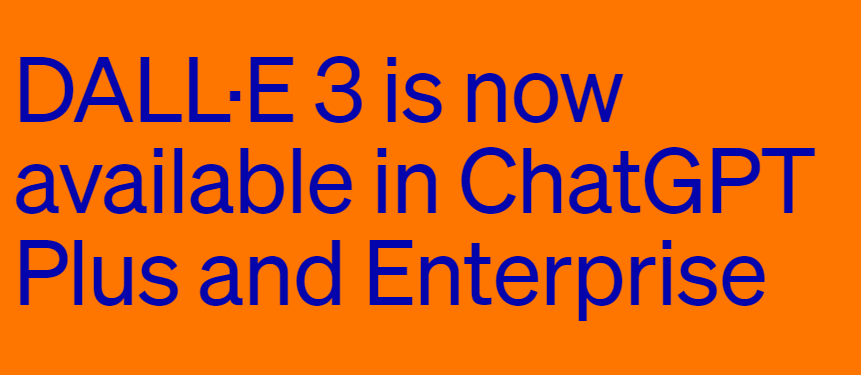
ChatGPThas taken a significant leap forward by integrating the ability to generate images.
This new feature, now available to both Plus and Enterprise users, allows individuals to describe their vision in a conversation, and ChatGPT will subsequently produce a range of visuals based on the description.
Users can then refine and iterate upon these visuals, even requesting revisions directly within the chat interface.
Powering this innovative feature is OpenAI’s advanced image model, DALL·E 3.
The introduction of DALL·E 3 into ChatGPT means users can now obtain photorealistic images based on their descriptions.
For instance, if someone is working on a school report about cirrus clouds and requires images that highlight their wispy nature, ChatGPT can generate such images, allowing for a direct comparison with any other cloud photos the user might have.
DALL·E 3 represents a culmination of extensive research, both internally at OpenAI and from external sources.
This model surpasses its predecessor by producing images that are not only more visually appealing but also sharper in detail.
It excels in rendering intricate details, such as text, hands, and faces.
Moreover, DALL·E 3 responds exceptionally well to detailed prompts and supports various aspect ratios, including both landscape and portrait.
The model’s enhanced capabilities stem from training it on improved captions, which were generated using a state-of-the-art image captioner.
OpenAI has prioritized responsible development and deployment for DALL·E 3.
A multi-tiered safety system has been implemented to prevent the generation of potentially harmful imagery, such as violent, adult, or hateful content.
Before any image is presented to users, safety checks are conducted on both the user prompts and the resulting images.
Feedback from early users and expert evaluations has been instrumental in identifying and addressing potential safety gaps, especially concerning the generation of graphic content.
Lastly, DALL·E 3 has been designed to decline requests for images styled after living artists.
Additionally, creators have the option to exclude their images from the training datasets of future image generation models.
Midjourney’s Game-Changing Upscale Features: A Detailed Overview
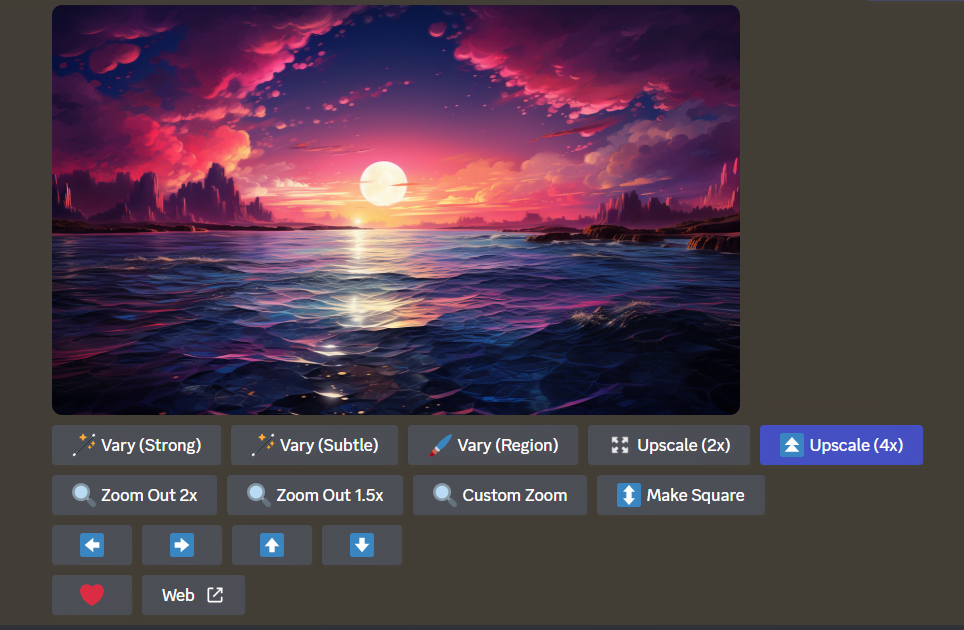
In the rapidly evolving world of technology, the quest for sharper, higher-resolution images is unending.
Digital platforms everywhere are striving to cater to the needs of artists, designers, and the general public.
Leading this charge is Midjourney, which has recently unveiled its innovative upscale features. Let’s dive deeper into what these enhancements entail.
Revolutionizing Image Enhancement with 2x and 4x Upscale Buttons
The frustrations of dealing with pixelated images or losing intricate details during resizing are now things of the past.
Midjourney has seamlessly incorporated 2x and 4x upscale buttons into their platform, available under any standard V5 or Niji job.
The upscaling mechanism is crafted to preserve as much of the original image’s detail as possible.
While the process is subtle to maintain the image’s inherent allure, it’s worth noting that any glitches or imperfections in the original might not always be rectified.
It’s also interesting to note that the 4x upscaler uses approximately three times more GPU minutes than the 2x version.
Key Points for Midjourney Enthusiasts
- The upscalers are currently optimized for fast-GPU time.
- Midjourney is evaluating the feasibility of running these tools in a “relax mode.”
- Users can anticipate brief load tests in the upcoming days, which will gauge the performance and feasibility of activating the upscale feature in relax mode
Challenges on the Horizon
Innovation often comes with its set of challenges, and Midjourney’s upscale features are no exception:
- Occasionally, the 4x upscale might yield a black or corrupted image, though this issue is under active investigation.
- Upscaling a low-res image doesn’t guarantee it will be ‘de-blurred.’
- There’s a minor possibility that images might appear slightly darker after upscaling
In Conclusion
Midjourney’s introduction of upscale features represents a monumental advancement in the realm of digital imaging.
These tools not only empower creators but also enhance the viewing experience for audiences.
It’s a laudable stride towards ensuring that the digital domain mirrors the vibrancy and detail of the real world.
As these features continue to shape the digital design landscape, users are encouraged to experiment with them and discover the expanded visual possibilities they present.
Riffusion’s Innovative Leap: Crafting Music and Voice with AI
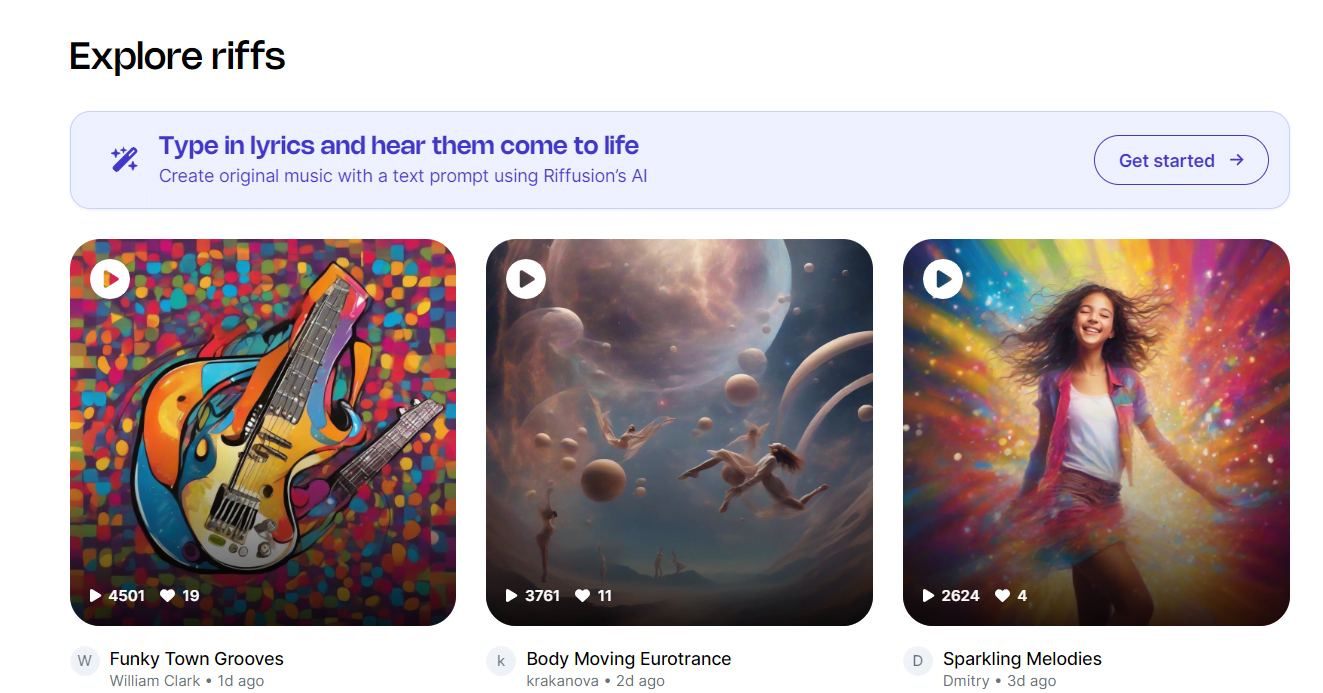
In the ever-evolving landscape of technology, the fusion of artificial intelligence and music has taken a groundbreaking turn.
Riffusion, a brainchild of developers Seth Forsgren and Hayk Martiros, has emerged as a revolutionary platform capable of generating music not from audio, but from images of audio.
This unique approach, though seemingly counterintuitive, has proven its efficacy and garnered significant attention.
A New Era of Music Generation
Riffusion’s journey began as a hobby project, but its potential was quickly recognized.
The platform’s ability to transform images of audio into music caught the attention of millions, including tech giants like Meta, Google, and ByteDance’s parent company, TikTok.
The buzz didn’t stop there. Investors took note, leading to the commercialization of Riffusion.
With the backing of musical sensations like The Chainsmokers and a successful $4 million seed round led by Greycroft, Riffusion is poised for greater heights.
The platform’s latest offering is a revamped, free-to-use app that empowers users to craft music by simply describing lyrics and a musical style.
Within moments, Riffusion generates “riffs” – short, shareable audio clips complete with singing and custom artwork.
This innovative approach democratizes music creation, making it accessible to all, regardless of musical expertise.
Harnessing the Power of Generative AI
The driving force behind Riffusion’s capabilities is a sophisticated audio model, meticulously trained from the ground up.
This model, fine-tuned on spectrograms (visual representations of audio), has been taught to recognize and recreate various sounds based on text prompts.
Whether it’s a “lo-fi beat for the holidays” or a “folksy blues song from the Mississippi Delta,” Riffusion delivers.
However, with innovation comes challenges.
The realm of AI-generated music has sparked debates around copyright infringement, especially with the rise of “deepfake” music.
Riffusion’s stance is clear – the platform is not designed to produce deepfakes or replicate famous artists.
Instead, it focuses on enabling users to craft personal, catchy tunes that resonate with them.
Looking Ahead
While Riffusion’s monetization strategy remains under wraps, the focus is currently on team expansion and the development of new generative AI products.
Collaborations with artists, exploring how Riffusion can enhance their creative processes, are also on the horizon.
In a world where generative music tools like Google’s MusicLM and Facebook’s MusicGen are making waves, Riffusion stands out.
It not only offers a unique approach to music creation but also provides a platform that’s fun, accessible, and truly transformative.
The future of music is here, and Riffusion is leading the charge.
October 30, 2023
Canva’s Advanced AI Tools: A Comprehensive Overview
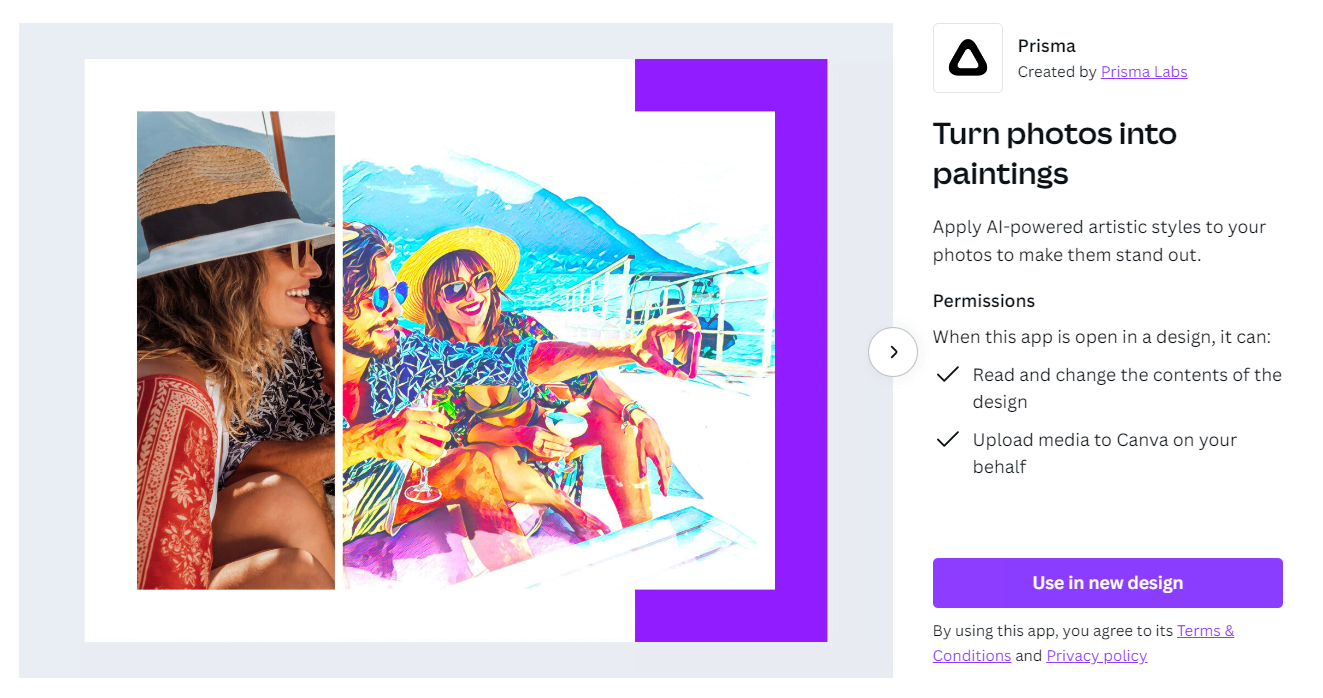
Canva, the popular design platform, has recently introduced a slew of advanced AI tools that have the potential to revolutionize the way users interact with the platform.
These tools, ranging from image editing to video scripting, offer both personal and professional users enhanced capabilities to create, edit, and transform their content.
One of the standout features is Prisma, which allows users to transform photos into various painting styles.
This tool can be particularly useful for businesses selling custom painted photo products or for creating unique YouTube thumbnails.
Additionally, Canva’s AI-driven photo editor offers an auto-enhance feature that automatically adjusts images to make them more vibrant.
Users can also expand or edit photos with the magic expand and magic eraser tools, respectively.
For those dealing with text, Canva offers a grab text option that extracts text from images, which can then be translated into different languages using the magic switch tool.
Moreover, Canva’s AI can script and generate entire mobile videos in seconds.
This is particularly beneficial for content creators who want to repurpose their content across different formats, such as turning a video into a blog post.
Another exciting addition is the Avatar by Neiro AI, which allows users to create video avatars with customizable appearances and voices.
When paired with Canva’s background remover, these avatars can be integrated seamlessly into various backgrounds or screen captures.
For music enthusiasts, the Melody Muse app generates short music tracks based on user input, perfect for short mobile videos.
Additionally, Canva’s Magic Media app offers text-to-video and text-to-image tools, enabling users to generate content with just a few keystrokes.
Art enthusiasts will appreciate the inclusion of Imaging and DALL-E, two third-party AI image generators.
These tools can be particularly beneficial for entrepreneurs selling print-on-demand products, as they can generate unique images for merchandise like t-shirts and mugs.
The QART app, which generates artistic QR codes, and the Sketch to Life app, which transforms sketches into images, add to the suite of creative tools available.
However, one of the most practical and user-friendly tools is the Magic Design app.
This tool allows AI to create designs from scratch, be it for social media posts, presentation slides, or videos.
In conclusion, Canva’s new AI tools offer users an enhanced experience, allowing them to create and edit content with greater ease and efficiency.
Whether you’re a casual user or a professional content creator, these tools provide a plethora of options to elevate your design game.
Major AI Updates in the Print On Demand World
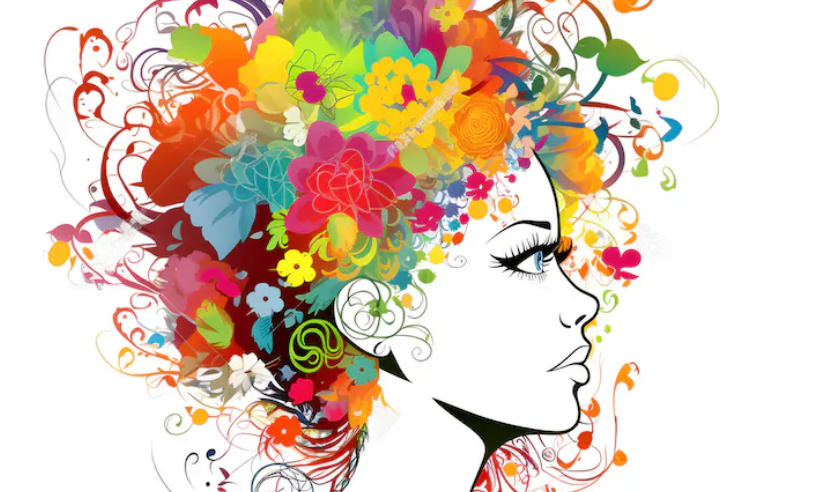
In a series of recent developments, the print on demand industry has witnessed some groundbreaking changes that are set to redefine the way creators and businesses operate.
Midjourney’s 4K Image Revolution
Midjourney has taken a significant leap by introducing a feature that allows users to generate AI images in 4K resolution.
This enhancement ensures that images can be printed directly in high quality, especially for small to medium-sized products.
For instance, an image intended for a phone case can now be uploaded directly, ensuring sharp and high-quality printing.
Printify’s AI Image Generator
Printify, not to be left behind, has launched its free AI image generator. This tool is optimized for print on demand products and even includes a background remover.
Users can generate up to four different images at a time, with a daily limit of 15 image generations, effectively providing 60 free images per day.
Additionally, Printify has integrated a free upscaler, ensuring that even low-resolution images are enhanced for better print quality.
Printify’s Trendy Product Launch
Staying ahead in the product game, Printify has unveiled trendy new high-profit products, including calendars for 2024.
With competitive pricing and the potential for high profit margins, these products are set to be a hit among creators.
Printful’s Price Reduction
In a move that’s bound to shake up the market, Printful has drastically reduced the prices of their products.
Their new membership program, Printful Growth, offers significant product discounts, making them more competitive in the market.
DALL-E 3’s Integration with Chat GPT
In a move that’s set to change the way images are generated, DALL-E 3 has been integrated into Chat GPT.
This allows for a more interactive and collaborative image generation process.
Users can now request specific tweaks to generated images, making it akin to working directly with a designer.
In conclusion, the print on demand industry is undergoing rapid changes, with innovations and updates coming in thick and fast.
These developments promise a more streamlined, efficient, and profitable future for creators and businesses alike.
7 Revolutionary AI Tools That Are Changing the Game

In the rapidly evolving world of technology, AI tools are at the forefront of innovation, offering solutions that can transform the way we work and even how we perceive the digital realm.
Here are nine AI tools that are making waves:
Qlip.ai:
This tool allows users to automatically extract short clips from longer videos, making it easier to repurpose content across multiple social media platforms.
It’s especially useful for those who want to share highlights from their videos on platforms like YouTube Shorts, Pinterest, TikTok, and Instagram Reels.
Kaiber.ai:
With Kaiber, you can transform static images into dynamic AI-generated videos.
For instance, you can animate a photo of your pet or any other subject, creating a unique and engaging video from a single image.
Tome.app:
This AI-driven presentation builder uses advanced language models to help users create presentations.
It offers various templates and allows for customization, making the process of creating presentations faster and more efficient.
Workspace.google.com:
Google’s latest AI is set to revolutionize email composition.
With a new feature in Gmail, users can draft emails using AI suggestions, making the process quicker and more intuitive.
This feature is also available in Google Docs, allowing for AI-assisted content creation.
Kittl:
This tool is a one-stop solution for graphic design needs.
From AI image generation to background removal and image upscaling, Kittl offers a range of features that make graphic design more accessible and efficient.
Media.io:
This platform offers a collection of AI tools for photo, audio, and video editing.
Whether you’re looking to remove objects from photos, enhance video quality, or generate music, Media.io has a tool for every need.
InVideo AI:
This text-to-video tool allows users to create videos from written prompts.
Users can write a short idea or script, and InVideo will handle the rest – from selecting scenes to crafting voiceovers.
These tools are just the tip of the iceberg when it comes to the potential of AI in the digital realm.
As technology continues to advance, we can expect even more innovative solutions that will further transform the way we work and interact online.
Whether you’re a content creator, business owner, or just someone looking to streamline their digital tasks, these AI tools offer solutions that can make a significant difference in efficiency and productivity.
Unlocking the Potential of AI in the Etsy Marketplace

Did you know that some Etsy stores are raking in over a million dollars annually by selling simple mugs and tumblers?
The secret behind their success isn’t just a catchy design; it’s the power of Artificial Intelligence (AI).
With the help of AI, creating unique and appealing designs has become more accessible than ever.
One might wonder how these stores achieve such impressive figures. The answer lies in the blend of creativity and technology.
For instance, some shops have made over $5 million since 2019, primarily from mugs and tumblers.
Another store generates a monthly revenue of $25,000 with basic text mugs, leveraging attractive fonts.
These products are simple in design, often devoid of images, relying solely on text.
Another lucrative niche is the realm of pet mugs. These mugs, adorned with adorable animals, pull in an annual revenue of $80,000.
While these figures are impressive, it’s essential to note that custom pet mugs can be time-consuming, as each design must be tailored to the individual customer’s pet photo.
However, the real game-changer in the market is the introduction of funny mugs.
Mugs with humorous texts or images, especially those that serve as gifting options, are seeing a surge in popularity.
A blend of two different topics, such as “funny” and “cats,” can result in a winning product.
For instance, a sarcastic cat quote like “leave my tail alone” can be a subtle way to convey a message to someone distracting you.
To bring these designs to life, AI tools like Kittl have emerged as invaluable assets.
Kittl’s interface is beginner-friendly, offering a seamless experience from design to product mockup.
With its AI quote generator, users can select specific themes and tones for their quotes, ensuring that each design is unique.
Moreover, Kittl provides high-resolution graphics suitable for print, eliminating the need for third-party tools.
But creating a fantastic product is only half the battle.
To ensure that these products reach the right audience, it’s crucial to optimize Etsy listings with relevant keywords.
Tools like EverBee can assist sellers in understanding which keywords potential customers are using, allowing them to optimize their product titles, descriptions, and tags accordingly.
In conclusion, the fusion of AI and creativity is revolutionizing the Etsy marketplace.
With the right tools and strategies, sellers can tap into this lucrative market, offering unique products that resonate with customers while enjoying a passive income stream.
As the world of e-commerce continues to evolve, those who harness the power of AI will undoubtedly lead the pack.
Follow the “AI Success Strategies” Series below:
AI Success Strategies Part 1
AI Success Strategies Part 2
AI Success Strategies Part 3
AI Success Strategies Part 4
AI Success Strategies Part 5
AI Success Strategies Part 6
AI Success Strategies Part 7
AI Success Strategies Part 8
AI Success Strategies Part 9
AI Success Strategies Part 11
AI Success Strategies Part 12
